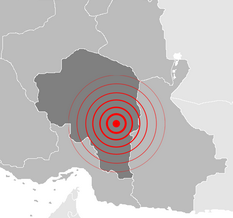
Scientists at the US Geological Survey (USGC) are monitoring Twitter to gauge real-time public reactions to earthquakes.
It seems that the bigger the quake, the bigger the spike in Twitter traffic. Researchers think that this instant data will help them to instantly judge the severity of the tremor and guide emergency services to the most affected areas.
In a BBC report, Dr Paul Earle of the USGC emphasises that Twitter will only ever be used to supplement existing sources of accurate scientific data, but notes that traditional data-sources can take up to 20 minutes to come on-stream.
Twitter might just fill the critical period between the quake and the scientific data arriving with real-time information which could save lives.
USGC engineers monitor Twitter for key words such as quake and earthquake to enable them to home in quickly on potentially affected areas. The BBC report goes on to highlight sample Tweets drawn from a quake in New Zealand earlier in December provide some insight as to the type of information that can draw the USGC’s interest:
- “Wellingtonians – was that an earthquake or just a very big truck going past our building?”
- “that was a bigger earthquake the mirror shook in the bathroom and the floor moved ….. Scared :(“
- “Just had a Earthquake, biggest one ive ever seen, not huge, but enough to really shake our house and everything on my desk, good old NZ”
- “My monitors were shaking like the water in Jurassic Park, kinda awesome. #earthquake #wellington”
The graph demonstrates how Twitter traffic can spike during quake events (The Great California Shakeout being a test scenario).
In addition, as more tweets are being sent with geo-location data attached, as they are sent from GPS-enabled devices, this source of information is only going to become even more valuable.
Photos: Wikimedia Commons; BBC/USGC
Get the TNW newsletter
Get the most important tech news in your inbox each week.







